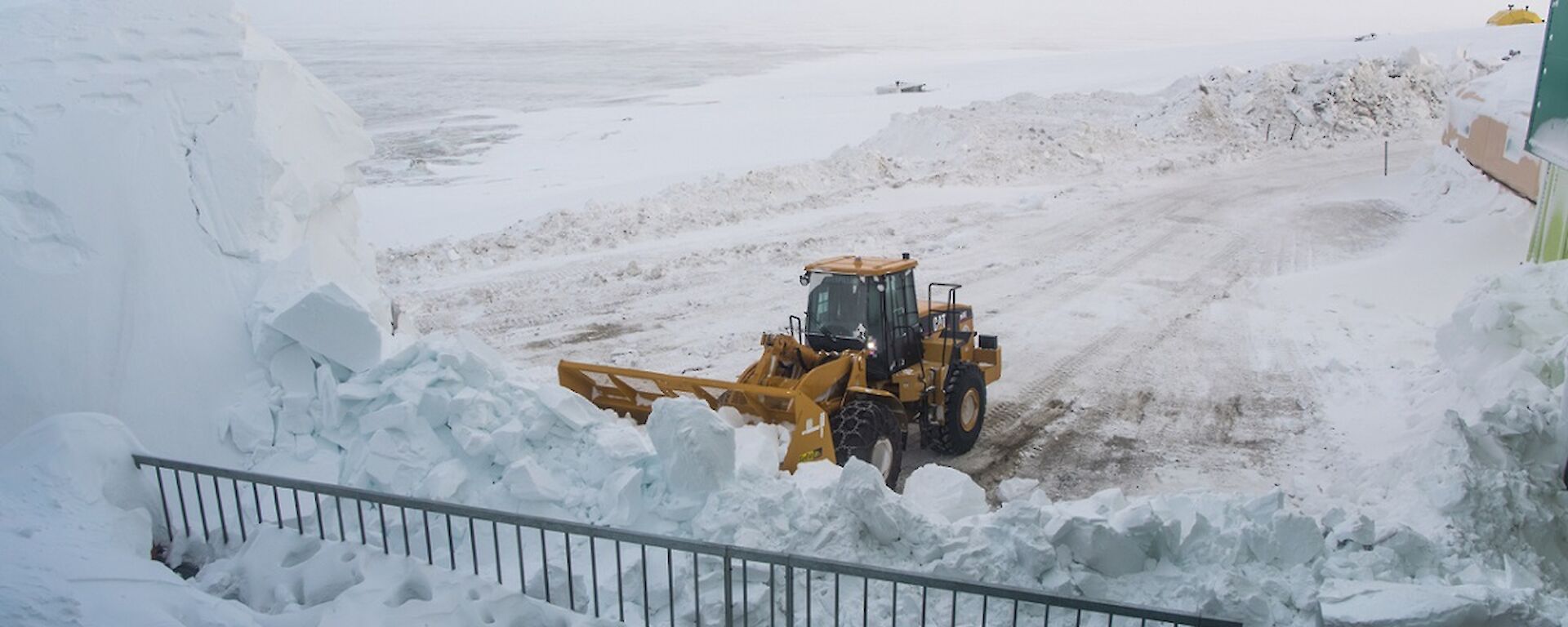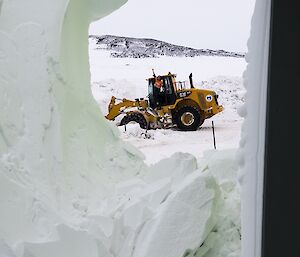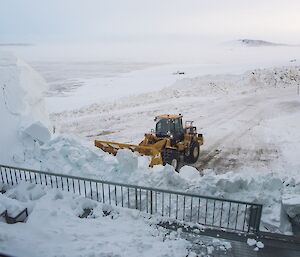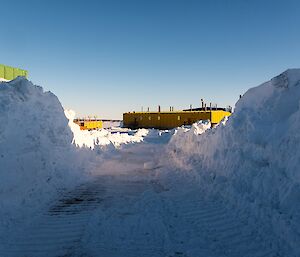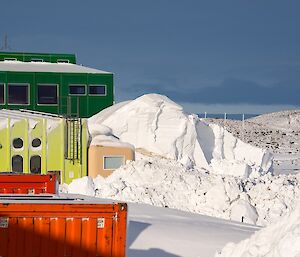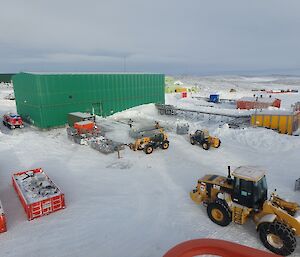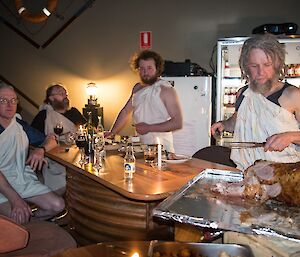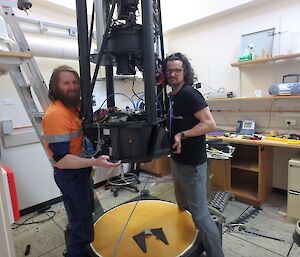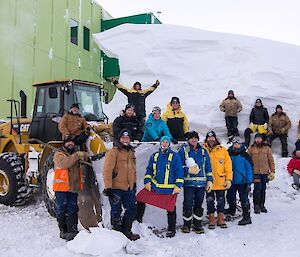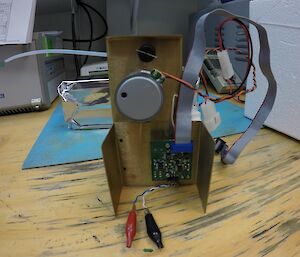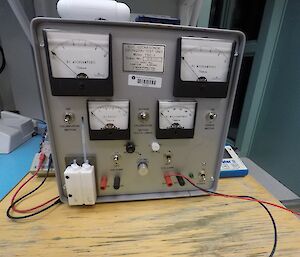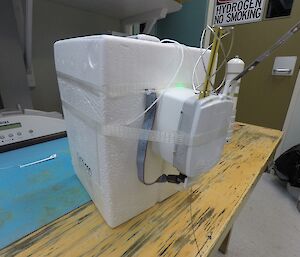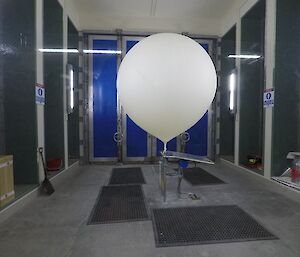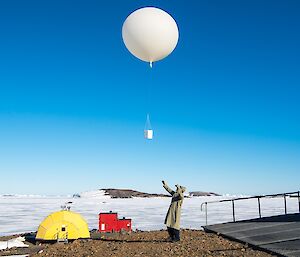It’s been another interesting week here at Davis with temperatures dropping once again into the minus thirties. A lot of snow has been moved and would you believe it’s quickly coming to that time of year when we prepare for the first ship of the season.
Expeditioners celebrated the end of winter and looking forward to the onset of spring over the next few months with a spring lamb spit roast and toga party on Saturday evening. Those who followed the instructions looked quite authentic in their togas and the others made do with sheets and well positioned safety pins to get into the spirit of the occasion. The bar area was decorated with flowing sails and lit up by field store Tilley lamps, which helped set the mood for an enjoyable evening. Those who really embraced the spirit of the occasion enjoyed the extended version of Gladiator in the cinema.
The end of our winter season is soon approaching and expeditioners are preparing to send many items back to Australia for processing and/or disposal. Some of the crew have taken advantage of the calmer and sunnier weather to move around containers and equipment and sort rubbish and recycling into more usable spaces as we prepare the station for resupply.
One interesting task has been to disassemble the Fabry–Pérot spectrometer which has been at Davis station since 2003.
Fabry-Perot Spectrometers are optical instruments that allow accurate measurements to be made of atmospheric winds and temperatures from the ground. This unit will soon be packed into specially made crates and shipped off to Alaska to once again observe the OH airglow.
Tony (Deputy Station Leader)

